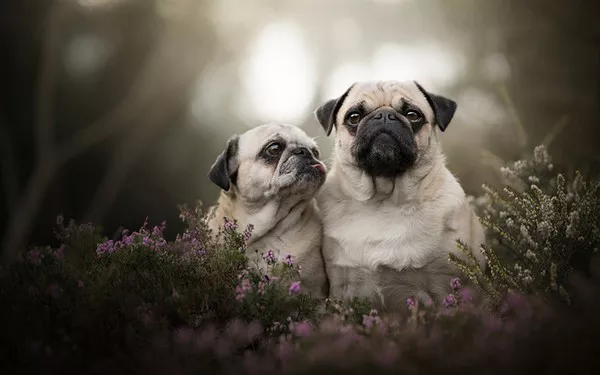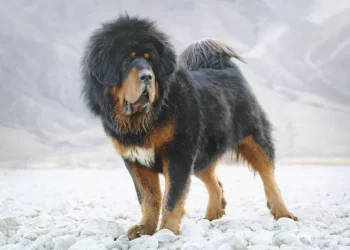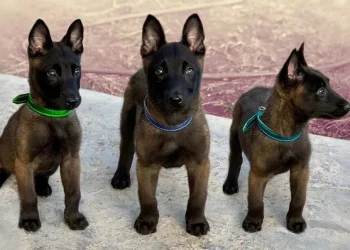When you think of dogs that drool, the first breeds that often come to mind are Great Danes, St. Bernards, and Mastiffs. However, nestled among these legendary droolers is a breed that might surprise you: the Shar Pei. Renowned for their unique appearance, charming personalities, and adorable wrinkled faces, these dogs bring joy to many households. But the question remains: do Shar Peis drool a lot?
In this article, we will explore the anatomy, characteristics, and care of the Shar Pei, delving into their drooling habits, factors that influence drooling, and tips for pet owners to manage any slobber that comes their way. Get ready for a fascinating journey into the world of Shar Peis, complete with humorous anecdotes and practical advice!
A Brief History of the Shar Pei
Before we tackle the drooling question, let’s take a moment to appreciate the Shar Pei’s storied history. Originating from China, these dogs date back to the Han Dynasty (206 BCE – 220 CE). Initially bred as working dogs, they served as guard dogs and hunting companions. The breed’s unique, deeply wrinkled skin was advantageous for combat; it made it harder for an opponent to grip and bite.
In the 20th century, the Shar Pei nearly became extinct due to political upheaval and economic hardship in China. Fortunately, enthusiasts in the West began to take an interest in the breed in the 1970s, leading to its eventual revival. The American Kennel Club (AKC) officially recognized the breed in 1992, and since then, Shar Peis have won the hearts of dog lovers worldwide.
Understanding Drooling
Drooling, or ptyalism, is the excessive salivation that occurs when a dog’s salivary glands produce more saliva than necessary. While all dogs drool to some extent—especially when anticipating food or getting excited—certain breeds are known for their copious amounts of drool. So where does the Shar Pei fall on the drooling scale?
Anatomy of the Shar Pei
To understand why some dogs drool more than others, it’s essential to consider their anatomy. The Shar Pei has a distinctive structure that can influence salivation:
Mouth Shape: Shar Peis have a broad, square-shaped muzzle, which can trap saliva. This anatomical feature can lead to drooling, especially when the dog is relaxed or excited.
Wrinkled Skin: Their iconic wrinkles aren’t just for show—they also play a role in drooling. The excess skin can create folds around the mouth, making it easier for saliva to escape and accumulate.
Teeth and Gums: Like all dogs, Shar Peis can experience dental issues that may cause increased drooling. Problems such as gum disease, broken teeth, or oral infections can lead to more saliva production.
Drooling Factors in Shar Peis
While the Shar Pei may not drool as much as a Saint Bernard, there are several factors that can influence the amount of drool you might encounter:
Excitement and Anticipation: When a Shar Pei is excited—think playtime, walks, or mealtime—they may drool more than usual. Their enthusiasm can stimulate salivary glands, resulting in a puddle on the floor.
Heat and Humidity: Like many dogs, Shar Peis can struggle with heat and humidity. Increased temperatures can lead to panting and drooling, as dogs attempt to regulate their body temperature.
Health Issues: Certain medical conditions can increase drooling. For instance, if a Shar Pei is experiencing nausea, pain, or dental problems, excessive salivation may occur.
Age: Puppies are often more prone to drooling than adults. Young Shar Peis are still developing their skills in managing saliva, and teething can lead to increased drooling.
Diet: A dog’s diet can also influence salivation. Foods that are particularly flavorful or smelly can trigger drooling, especially if your Shar Pei gets a whiff of something delicious.
The Shar Pei Personality
Understanding a breed’s personality can give insight into their behavior, including drooling. The Shar Pei is known for its loyal, independent, and sometimes aloof nature. They form strong bonds with their families and can be quite protective.
Their temperament can lead to drooling during specific situations:
Bonding Moments: When a Shar Pei is close to their owner, such as during cuddle time or play, they may drool more due to excitement or contentment.
Stress and Anxiety: Some Shar Peis can become anxious or stressed in unfamiliar situations. Anxiety can lead to increased salivation, so it’s crucial to monitor your dog’s behavior and find ways to ease their stress.
The Drool Dilemma: How Much Is Too Much?
As a pet owner, it’s essential to determine what constitutes “normal” drooling for your Shar Pei. While some drool is expected, excessive drooling can indicate health issues or environmental factors at play.
Signs of Excessive Drooling
Here are a few indicators that your Shar Pei may be drooling more than average:
Constant Drooling: If your dog is consistently drooling without any apparent reason (such as food or excitement), it may warrant a veterinary visit.
Changes in Appetite: If your dog’s eating habits change—especially if they suddenly lose interest in food—consult your veterinarian.
Oral Health Issues: Look for signs of dental problems, such as bad breath, swollen gums, or loose teeth, which could contribute to excessive drooling.
Behavioral Changes: If your Shar Pei is exhibiting unusual behaviors—like hiding, excessive whining, or lethargy—this may also indicate a health issue.
When to Consult a Veterinarian
If you notice any of the signs mentioned above, it’s essential to consult a veterinarian. They can perform a thorough examination and determine whether your Shar Pei’s drooling is normal or a sign of an underlying problem. Some potential health issues that can lead to excessive drooling include:
Dental Disease: Infections or periodontal disease can lead to drooling and discomfort.
Gastrointestinal Issues: Problems such as nausea, pancreatitis, or obstructions can increase salivation.
Poisoning: Certain toxins can cause excessive drooling, so it’s crucial to act quickly if you suspect your dog may have ingested something harmful.
Neurological Disorders: In rare cases, drooling can be a sign of neurological issues, so it’s important to get a professional evaluation if necessary.
Tips for Managing Shar Pei Drool
If you find yourself facing the occasional puddle of drool from your beloved Shar Pei, fear not! There are several practical tips to help manage drooling:
See Also: What’s the Best Food for Shar Pei?
Regular Grooming
The unique wrinkles of a Shar Pei require regular grooming to maintain their health and hygiene. Regular grooming not only helps reduce drooling by keeping the skin clean but also provides an opportunity to check for any health issues.
Wipe Wrinkles: Use a damp cloth to gently clean the wrinkles around your Shar Pei’s face. This helps remove trapped saliva and debris.
Brush Regularly: Brushing your Shar Pei’s coat helps reduce loose hair and dander, which can contribute to drooling.
Healthy Diet
Feeding your dog a balanced and appropriate diet can reduce drooling. If your Shar Pei has food sensitivities or allergies, work with your veterinarian to identify the best diet for them.
Stick to High-Quality Food: Choose high-quality dog food that meets your Shar Pei’s nutritional needs.
Avoid Table Scraps: While it’s tempting to share your food, table scraps can lead to digestive issues that may increase drooling.
Stay Hydrated
Ensure your Shar Pei has access to clean, fresh water at all times. Dehydration can lead to excess drooling, so keeping your dog hydrated is essential.
Monitor Water Intake: Keep an eye on how much water your dog drinks, as changes in their drinking habits can signal health issues.
Monitor Excitement Levels
If you notice your Shar Pei drooling excessively during excitement, consider modifying their environment to reduce overstimulation.
Calm Introductions: When greeting guests or introducing new experiences, keep the atmosphere calm and controlled to reduce excitement-induced drooling.
Frequent Breaks: During playtime, take frequent breaks to allow your dog to relax and reduce the potential for excessive salivation.
Veterinary Check-Ups
Regular veterinary check-ups are essential for maintaining your Shar Pei’s health. Schedule routine visits to monitor your dog’s dental health, weight, and overall well-being.
Dental Care: Discuss dental care options with your vet, as regular teeth cleaning can help prevent dental disease and excess drooling.
Vaccinations: Ensure your Shar Pei is up to date on vaccinations to prevent illnesses that could lead to drooling.
Conclusion
In conclusion, while Shar Peis may drool more than some breeds, they are not the drool factories that many imagine. A moderate amount of drooling is entirely normal, especially during moments of excitement or heat. However, as a responsible pet owner, it’s crucial to monitor your dog’s drooling habits and seek veterinary advice if you notice any concerning signs.
Owning a Shar Pei is a rewarding experience filled with joy, laughter, and, yes, a little slobber. By understanding your dog’s unique characteristics and providing proper care, you can ensure that your Shar Pei remains a happy, healthy member of your family. So embrace the drool—after all, it’s just a small price to pay for the love of this charming and unique breed!
Related Topics:

























